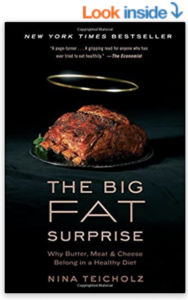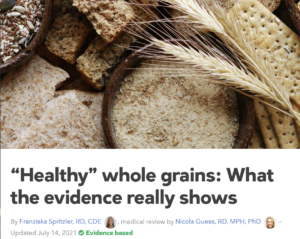Nutrition Update: Low Carb, Healthy Fat, and Diet Doctor’s Pivot to Protein
Over the last year public health became the world’s number one public policy concern, and poor nutrition should have been at the center of discussion and debate. Past nutrition and public health posts share resources on metabolic health, many emphasizing that federal nutritional guidelines are mostly misguided.
I’ve shared many links to LCHF (Low-Carb, Healthy Fat) articles, podcasts, and videos. In recent months one of my main sources, DietDoctor, has pivoted to the importance of increased protein as more important than increasing healthy fat. See How much protein should you eat? (DietDoctor, July 20,2021) or this recent podcast: Diet Doctor Podcast #77 — Past, present, and future. DietDoctor meals, articles, podcasts, and videos still explain the importance of reducing sugar and carbohydrates, but now argue for focusing on protein, especially for those who plateau following keto and low-carb diets.
More protein or more healthy fat? That’s not the debate most read about. The mainstream nutritional message pushes whole grains, fruit, and veggies, plus lean meat. But is that advice backed by RCT (Randomized Control Trial) studies? Does it work for most people?
Chronic disease has become the major health hazard in America, with infectious disease a risk almost exclusively for those with chronic conditions and compromised immune systems. More than half of Americans have prediabetes or type 2 diabetes, and research finds only 12% of adults metabolically healthy:
Data revealed that only 12.2 percent of American adults are metabolically healthy, which means that only 27.3 million adults are meeting recommended targets for cardiovascular risk factors management, according to researchers.
Only 12 percent of American adults are metabolically healthy, Carolina study finds, UNC Chapel Hill, November 28, 2018
Over the last year I’ve been learning from and sharing articles, videos, and podcasts from the “low-carb” community of doctors and nutrition researchers: LowCarbUSA, LowCarbMD, DietDoctor, LowCarbDownUnder, CrossFit Health.
Here is an overview from Dr. Adele Hite concerning the federal Food Pyramid/Plate: Eathropology introduction: “The Food Pyramid? It’s just wrong.”
Americans are mostly heavier than they want to be not because they didn’t follow federal nutritional recommendations, or because they don’t exercise enough or haven’t tried eating less. Federal “fat-shaming” is blaming overweight people for not trying hard enough. But it turns out standard “eat less; exercise more” advice, mixed with low-fat, high-carb, lots of small meals advice, leads to cravings and crazy.
I say “crazy” because the body interprets eating less as not having enough to eat, which was not an unusual condition through most of human history. When people make the effort to eat less, they can lose weight for a week or two, maybe longer, and feel a sense of accomplishment. But their metabolism soon shifts down to reduce energy use and to conserve. So the reduced calories that allowed weight loss last month cease to do so, since the body is burning fewer calories. People often feel miserable and cold because their metabolisms are adjusting to conserve energy. So they suffer and begin going crazy (as starvation studies have shown).
The low carb and keto communities recommend reducing sugar, grains, pasta, and other carbohydrates and eating more healthy fat (in butter, eggs, fish, meat, whole fat milk, cheese and yogurt). And they advise not to leave the table hungry. Eat until satisfied. Healthy fat and protein (often together in meat, eggs and other nutrient dense foods), satisfy hunger faster and longer. Cravings come more from consuming carbohydrates which boost glucose levels in the bloodstream followed by surging insulin and then a blood sugar crash in a couple hours leading to cravings. So… that’s the theory advanced in hundreds of videos and articles across low-carb websites and books.
But there is still disagreement. Much of the establishment nutrition community, along with vegetarian and vegan websites, call for meals of veggies, fruits, whole grain, lean (i.e. low-fat) meats, and often recommend many small meals through the day. They too advise against high-sugar and packaged, “ultra-processed” foods. But foods processed to reduce saturated fats instead use PUFAs (polyunsaturated fats) and often have more sugar to compensate for flavor lost when saturated fats are removed.
Not everyone can eat everything
Gary Taubes commented in a podcast that understanding low-carb/keto diets seems to turn on a “conversion experience.” Not everyone struggles with their weight. Most doctors, nutritionists, and public health offices still tell those overweight to “eat less and exercise more” and believe our body weight is determined by a “calories in; calories out” model, as if the human body were a simple machine burning energy and being fed energy.
But this advice flies in the face of nutritional and metabolic reality as well as history. Our digestive systems don’t convert all the calories we consume into the cellular energy (ATP) that powers our muscles. Some calories are instead converted into heat.
There are three major macronutrients: protein, fat, and carbohydrates. The way food is prepared, cooked, or processed changes bioavailability. Our bodies also require many micronutrients like vitamins and minerals.
What’s amazing in all this is the ongoing disagreement about which macronutrients matter most, and how much of each is best for health. The kids of fats also matter. Fats can be saturated, unsaturated, or polyunsaturated (in-between). Which are healthy and which unhealthy? Experts seem to disagree.
• Harvard Health advises: “limit the saturated fats, and replace with essential polyunsaturated fats“
• Yale Health offers similar advice:
Emphasize fruit, vegetables, whole grains and low-fat or fat-free milk and milk products.
Nutrition and Healthy Eating (Yale Health)
Include lean meats, poultry, fish, beans, eggs and nuts.
Make sure your diet is low in saturated fats, trans fats, salt (sodium) and added sugars.”
But against this “old school” nutritional advice are doctors, nutrition researchers, and organizations making the case that saturated fats are healthy and recommending instead to avoid polyunsaturated vegetable oils (PUFAs, also referred to as “industrial seed oils.” The same fats Harvard Health calls “essential”).
Here is a overview with links to research: Vegetable oils: Are they healthy? (DietDoctor, July 13, 2021). Also important: these PUFAs are new in western diets, developed and consumed just in the last century:
Around 100 years ago, there was very little vegetable oil in the food supply, and it did not form a significant part of the diet.10
The consumption of soybean oil increased more than 1,000-fold from 1909 to 1999.11 According to food availability data, by 2010, the amount of vegetable oil in the US food supply was 50 grams, or 11 teaspoons of vegetable oils each day per capita.
These data do not account for waste, however; consumption data suggest intake of linoleic acid (the major omega-6 fatty acid) is around 17 grams per day, about 7% of energy intake.12 Vegetable oil intake in total is probably twice this amount.
The dramatic increase in vegetable oil consumption is supported by data showing the rise in linoleic acid consumption is changing the fatty acid composition of the body’s cells.13
Vegetable oils: Are they healthy? (DietDoctor, July 13, 2021).
For a history and overview see Nina Teicholz 2017 presentation – ‘Vegetable Oils: The Unknown Story’ on YouTube.
Being able to quickly turn carbohydrates to body fat was long a positive not a negative. Body fat helped people survive long, cold winters. Famines and infectious disease outbreaks were not uncommon before the Industrial Revolution. Millions starved to death when crops failed in Europe and in societies around the world. In times of famine people survived with what could be called a “metabolic gift”: our metabolism automatically steps down to conserve energy.
As Gary Taubes comments: “Not everyone can eat everything.” Millions of overweight Americans and Europeans have metabolic systems that helped their ancestors gain weight quickly in the summer and fall when food was plentiful. Stored fat could be burned through winter and until new crops were available. Now winter never comes to grocery stores where summer fruits, vegetables, and grains are always plentiful.
Making the healthy weight and metabolism struggle harder are the thousands of packaged high-carb foods in grocery stores. The food industry responded to public health nutrition guidelines that recommend reducing fat consumption, which left more calories to come from carbohydrates.
Taking the fat out of chocolate milk, for example, also removes the rich creamy flavor. Adding sugar allows sweetness to compensate somewhat for loss of richness. Lower-fat cookies, cakes, ice cream as well as main meals are similarly addressed with more sugar, processed carbs, stabilizers, and a host of other ingredients. Trader Joe’s low-fat Sweet Chicken Apple sausages have 6 grams of sugar each, about the same as a low-sugar JoJo chocolate bar.

Blame the food industry! Blame the nutrition and public health establishment! Blame the government! But also do your own research into the history, science, and ongoing debates surrounding this Big Fat Surprise (look inside on Amazon).
Pushback in a Politico article, The money behind the fight over healthy eating (October 7, 2015) claims a Texas billionaire is funding the push to revise the federal nutrition guidelines. This is misleading, to say the least. Just look at the millions of dollars poured by “Big Grain” each year into low-fat claims and advertising. (Whole grain overview here on Diet Doctor.)
Low-Carb Evangelism from the Converted
Many of the leading podcasts exploring nutrition science and practice and recommending keto and low-carb nutrition, are hosted by the converted, by low-carb and keto evangelists, often doctors and nutritionists who tried to follow the “eat less; exercise more” advice they had been giving their patients. But they kept gaining weight no matter how much they exercised. They learned first hand that the “calories in; calories out” model is weak. Calories consumed matters, but less than how our bodies respond to the macronutrients (protein, fats, carbohydrates) in the food we eat .
Doctors learned, often from patients who had improved their metabolic markers through dietary changes (and lost weight), that cutting sugars and carbohydrates was transformative. Dr. David Unwin, a UK General Practitioner (PG) tells the story of a single woman who changed his understanding of Type 2 Diabetes (link to 4-minute mark of 2017 talk by Dr. Unwin). A patient put her Type 2 diabetes into remission, one of 40,000 on a low-carb UK forum sharing ideas and advice on how to improve their health (and warned not to let their doctors know).
This was one of the first videos that influenced me. My father had suffered for years with type 2 diabetes and I realized I was likely on the same path, gaining weight as my father had at my age. For me, in May 2020, I learned from this and other Low Carb Down Under videos by doctors and nutrition researchers that cravings for snacks are actually caused by these high-carb snacks. I’d gained weight and was up to 232 pounds, my highest ever (though only 8-10 pounds over what had become normal over the last ten years).
My father had recently passed away and suffered from type 2 diabetes for over a decade. He had gradually gained weight since the 1980s. I’d gained weight over the years as well, but was 24 years younger. Maybe the same weight gain would continue for me. Was I on that same path and maybe pre-diabetic already?
So watching videos and reading books combined with fear and grief for my father’s suffering. Somehow these changed my self-image from the guy who snacked through the day on cookies and potato chips, ate cereal for breakfast, a sandwich for lunch, pastries at the local coffee shop, and pie whenever it was available (my uncle kept bringing home pie, and I helped myself).
Through May and June of 2020 I’d look from time to time at the box of Kirkland ice cream bars in the freezer but was no longer tempted. Eggs and bacon with spinach, onion and mushrooms replaced cereal for breakfast, often delayed to late morning or noon. Fish or beef for dinner became the norm for my low-carb/keto meals, plus occasional fasting. I ate when hungry, but didn’t feel hungry that often. I walked each day (about 10,000 steps), lifted light weights.
More on my experience and the gadgets I use to measure BMI, body fat, muscle, water, etc in earlier posts (and here). This post is already long, but I hope will be helpful to readers.
My favorite podcast is LowCarbMD, hosted by Dr. Brian Lenzkes and Dr. Tro Kalayjian. Many, many are fascinating, usually with doctors as guests sharing their personal stories and professional experiences. Here is link to Episode 188: Dr. Elie Jarrouge:

Thank you for joining us for another episode of the Low Carb MD Podcast. Dr. Elie Jarrouge is a Board Certified Internal Medicine Doctor based in Houston, Texas. He did his Internal Medicine Residency and Nephrology Fellowship at Baylor College of Medicine. He is also Board Certified in Nephrology.
In this episode, Brian, Tro, and Elie talk about the intimate relationship between poor metabolic health and a multitude of diseases, the COVID Delta Variant, what inspired them to become doctors, the many benefits of the direct primary care model of medical care, physician burnout, and the power of community when it comes to staying consistent with a diet.


I think nutrition is so complex especially because everyone has their own genetic predispositions and the same thing does not work for everybody… 🙂 maybe macronutrients affect us differently but also they affect each individual person differently depending on their genetic makeup . Some people are more prone to having high cholesterol, others to diabetes. Neither fats nor carbs in excess are good but we may react more to one than the other, I think